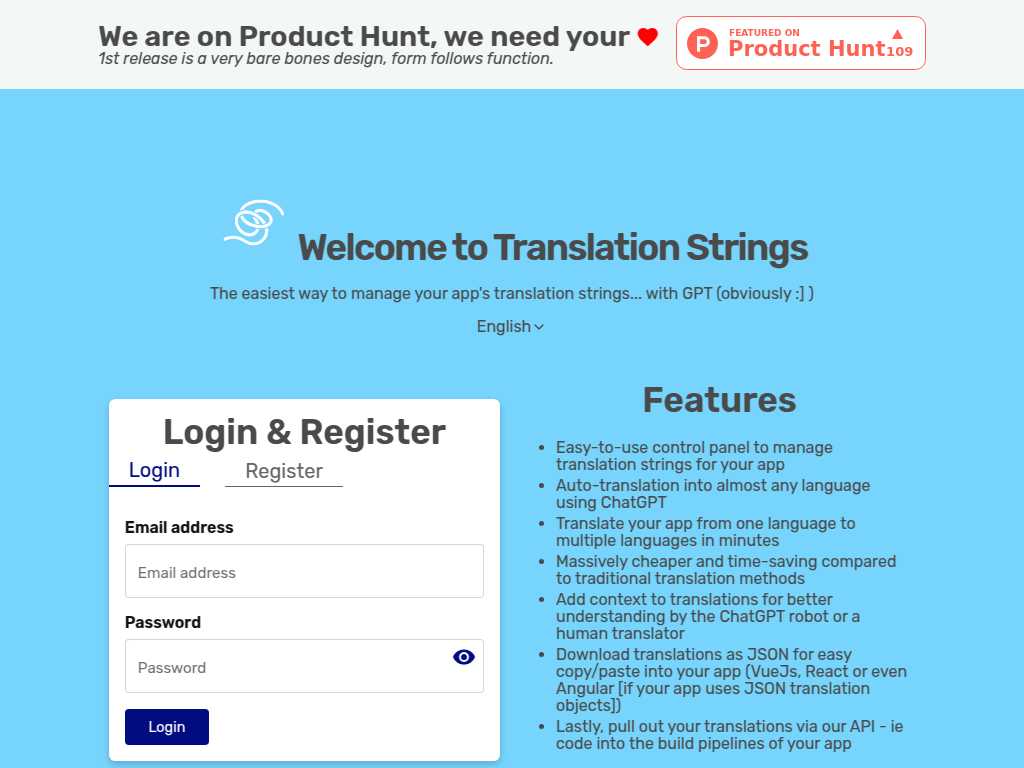Translation Strings
Translation

Effortless Software Localization with Translation Strings
Average rated: 0.00/5 with 0 ratings
Favorited 0 times
Rate this tool
About Translation Strings
"Translation Strings" typically refer to the text components in software applications or websites that require translation into various languages to support users globally. Although specific detailed information about a company named "Translation Strings" is not available, the general concept is pivotal in software localization, which involves adapting software interfaces and documentation for different languages and regions. The primary purpose of managing translation strings is to streamline and enhance the efficiency of translating digital content. Key features in tools designed for this purpose often include centralized management of translations, which allows updates and additions to be made in a single location. This approach ensures maintainability, consistency, and scalability as applications grow or enter new markets. Efficiency is further boosted by avoiding the tedious task of manually updating text across multiple files. Such tools usually facilitate the translation process through various capabilities: - **Key-Value Pair System:** They manage translations in a structured format, where each text element has a unique identifier, simplifying updates and maintenance. - **Machine Translation Integration:** Leveraging artificial intelligence to provide initial translation suggestions, speeding up the process. - **Collaboration Features:** Enabling translators and developers to work together efficiently, often through a comment and review system. - **Quality Assurance:** Features for maintaining linguistic quality and consistency. - **Version Control:** Managing different iterations of translations to track changes and updates. Integration capabilities with other platforms and tools are vital. For instance, Phrase integrates with design tools like Figma, allowing a seamless workflow from design to development. Localazy and Appian offer similar integration and collaboration features adapted to various development environments. While there is no specific information on a company named "Translation Strings" receiving awards or recognition, the importance of translation strings in the software localization ecosystem is well acknowledged. Platforms like Phrase, Localazy, and Appian highlight their ongoing updates and feature enhancements to stay competitive and support the evolving needs of their users. In summary, translation strings are crucial for ensuring that software and digital content can effectively reach and communicate with a global audience, and the tools designed to manage them provide a range of functionalities to support this objective.
Key Features
- Intuitive control panel for seamless management of translation tasks
- Auto-translation powered by ChatGPT for efficient language conversion
- Supports translations into almost any language to facilitate localization
- Streamlines translation processes, saving time and effort
- Ensures consistency in translations for app strings
- Allows users to review and edit AI-generated translations as needed
- Web-based platform accessible via modern web browsers
- Secure handling of user data, with detailed privacy policies available
- Capable of managing multilingual content for multiple apps within one control panel